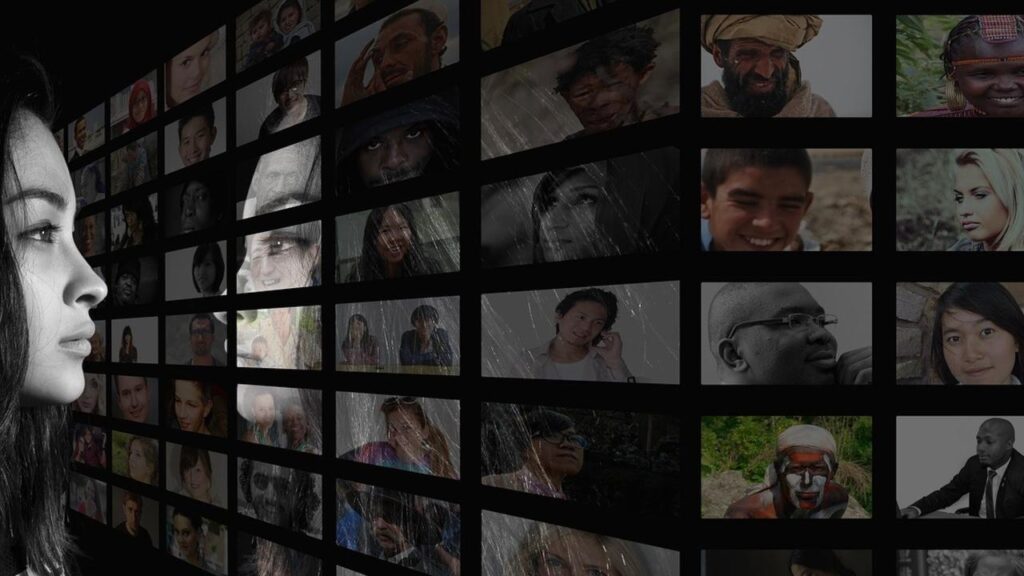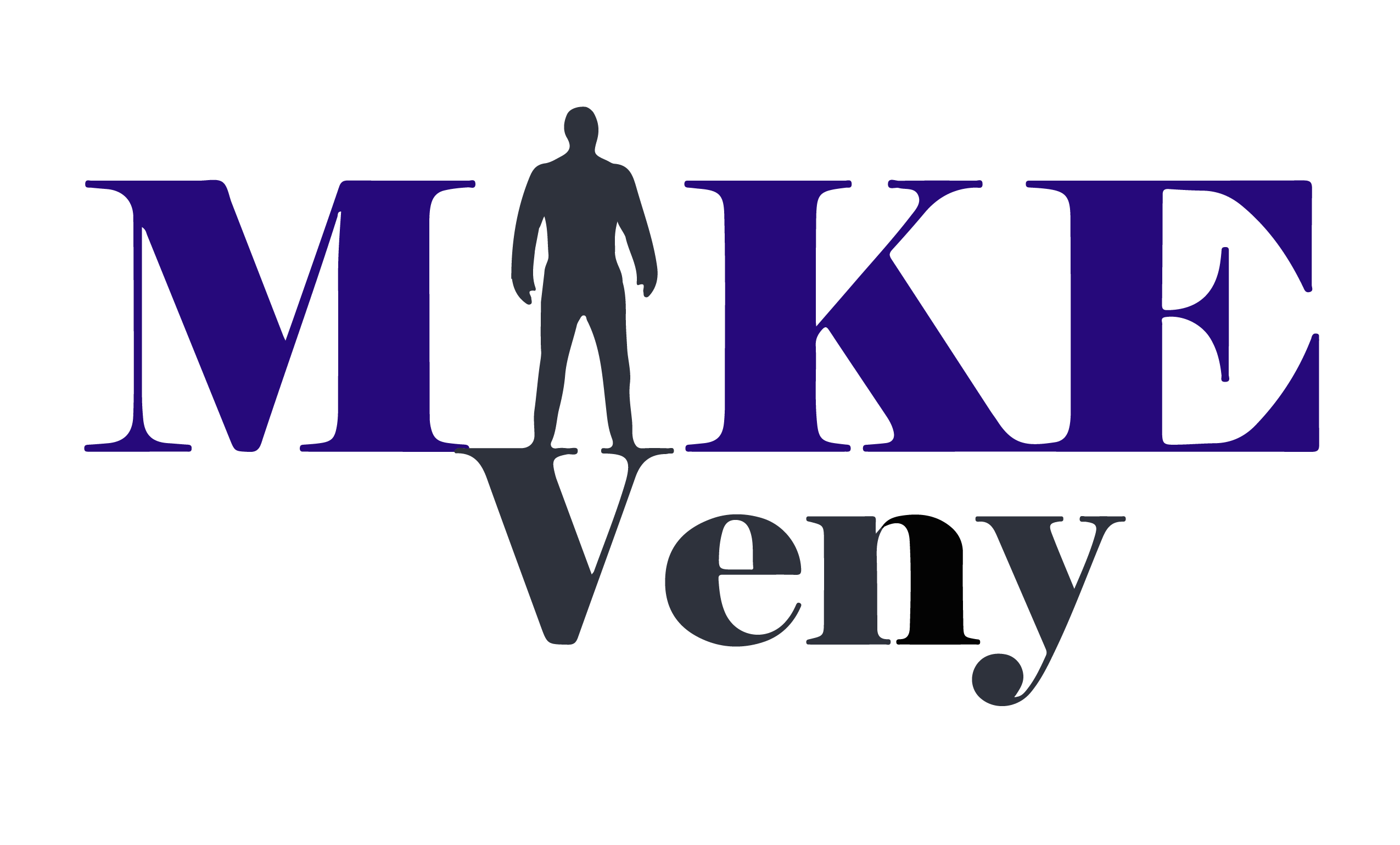Gray and Teal Shoes Aren’t the Only Things We See Differently

The gray and teal shoes, the gold and white dress, and Yanny vs. Laurel. As a society, we just can’t get enough of these puzzling situations. And even though science does its best to try to explain it to us, our perception causes us to struggle to really wrap our heads around it. It reminds me a lot of how diversity and inclusion are shaped by our perceptions.
The teal and gray shoe
Now, this whole teal and gray shoe thing baffles me. I’ve operated my entire life on the concept that colors were an absolute thing. I believed that unless someone was colorblind, we all saw the same colors. If it’s teal to me, then it should be teal to you.

How can some people see the shoe so differently when it’s so obviously gray and teal to me?
And yet, at the same time, I know that if someone sees pink and white, that’s their reality. That’s what they see and believe. It doesn’t matter what I do, I’m not going to be able to convince them otherwise. Their perception is their reality. And my perception is my reality.
The hidden diversity and inclusion lesson
Our perception is our reality.
When it comes to diversity and inclusion, two people can look at the same thing or be in the same situation and read it differently. Their experiences in life have shaped their perceptions of how things are. It doesn’t mean that one person is wrong and the other is right.
They simply perceive things differently based on their perception of the situation.
It’s the gray and teal shoe thing playing out in the way that people see and treat one another. We look at the same thing, make our judgments about it based on what we know personally, and then act based on that perception.
Here’s an example of this from my own life
For years I was unaware of how I thought about and treated women. It didn’t matter if I knew them professionally or personally. I had no sense of awareness about it until it was brought up to me by my therapist.
Let me give you a little background about the situation.
Somewhere along the way growing up, I started to have a fear of being emasculated. It’s something that many men struggle with but few admit. So, I’ll do it for all of us.
If you’re unfamiliar with the term, the metaphorical definition is “the removal of a male ego, pride, empowerment.” As a “strong black man”, this is something that I struggle with.
This fear shaped my personality and thinking over the years. It led me to have an unconscious, negative view of women to the point that I feared them and held a lot of resentment toward them. It led to many failed relationships and lots of interesting interactions, as I’m sure you can imagine. (Don’t worry. Nothing that got me in trouble with the law.)
But then my perception was challenged
Years ago, after I got past my therapist being a woman, I began working with her on this struggle with feeling emasculated. I started to gain some awareness about my behavior and thought patterns around how I saw women.
And let me explain—these were subtle behaviors. This wasn’t something that I spent time thinking about and focused on. They were small things that were happening in the background, subconsciously, that I started to become aware of. Just that simple awareness alone led to significantly healthier interactions with women. Both personally and professionally.
I’ve been working on this for four years now. And I’ve noticed in my own company, the shift in effectiveness, efficiency, and overall attitude of everyone on my team.
Truth be told, there is still a long way to go with my team. I love them all dearly, they do great work, and yet I’m aware there are things I can do better to help improve the overall environment and help produce better products.
Self-awareness is important
I think that’s one of the most important lessons a leader can learn—self-awareness. And it’s something that we can never fully learn. It’s something that we always need to be working on.
The progress that I’ve made in working with my team, mainly women, is not just from me changing my perception of women. It’s also from me learning other leadership skills because I have the self-awareness that I need to continue to improve as a leader.
I can tell you from personal experience that addressing my mental health directly has allowed me to help facilitate a better culture of inclusion.
At the end of the day, it starts with awareness and ends with awareness.
I have learned to perceive women differently. I now see the way I used to think and the way I think now and just how different those ways of thinking are.
How to change the perception of diversity
Since perception is reality, the best way to address diversity and inclusion is to help people change their perception of diversity. We need to help each other see things from a new perspective.
1. We need to eliminate stereotypes
Take a look at these common stereotypes:
- Americans don’t care about the environment.
- The French are snobs.
- Millennials believe they are entitled.
- Gay men have good style.
- Women are more in touch with their emotions.
- White men have an easy path to success.
- Young black men are dangerous.
- Asians are bad drivers.
- All immigrants are abusing the system.
- Most police are bad.
- Democrats want to take your guns away.
- Republicans are close-minded.
Let me be honest, it was hard to write those. I’m guessing that at least one of these touched your nerves.
Do you see anything that you’re guilty of subconsciously believing? Probably. We all struggle with this.
But do you see how ridiculous they are when you’re just looking at the words on the screen? And yet, we subconsciously believe in stereotypes.
We have allowed our perception in these areas to be swayed by what we’ve witnessed in a handful of people. Or worse yet, we have allowed our perception to be swayed by what others have told us about these people. When we do that, we base our perception on things we haven’t ever experienced.
If we want to change inclusion, then we need to stop allowing ourselves to believe these blanket statements. This is part of what keeps racial and political tension high in America.
2. We need to stop trying to persuade people
I’m guessing when it came to this gray and teal or pink and white shoe situation there were a lot of people who tried to sway others to see what they saw.
I mean, when you know that something is a certain way, without a doubt, you want to correct those who don’t know what you know. But that’s where the problems start. Our perception is our reality and not everyone has the same perception. So, what we get is arguing and tension.
The world is full of arguing and tension.
Have you ever changed your mind about something you felt strongly about because someone argued with you about it? I doubt it.
3. We need to stop throwing facts at people
You would think that one of the best ways to persuade people that their perception of a situation is wrong is to hit them with some cold, hard facts.
But it turns out, that doesn’t work.
This is why Diversity and Inclusion Officers are quickly growing frustrated in reaching their employees. You can share all the facts that you want with people, but studies have found that it’s not going to make a real difference.
Two studies conducted by Stanford that were completed years apart both found similar results. In one of the studies, the students were split into two groups and they were all supposed to pick out real suicide notes from fake notes. One group was led to believe they had chosen 24 out of 25 of them correctly. The other group was told they had only chosen 10 of the 25 correctly.
The students were then told that the scoring was a setup and not, in fact, true. Afterward, the students were asked if they thought they had done well or not on actually choosing the right notes, without knowing their correct score. The students in the group that had a high fake score still believed they had done well and the ones in the group that had the fake bad score thought their real score was most likely low as well.
Even though the students didn’t know any true facts about what their score was, they continued to believe what their initial perception was even though they were presented with facts that should have made them think differently. You can read more about it here if you’re interested.
Presenting people with facts does not change their perception.
We are emotional people. Even those who think they are incredibly logical still make decisions based on their emotions.
4. We need to work on seeing other people’s perspectives
Since we can’t logically argue the facts of diversity and inclusion with people, the world has to find a better way to start making improvements in this area. I believe the way that we do this is going to be through touching people’s emotions and helping them build empathy for others.
If we stop presenting people with facts and start connecting people together emotionally, I think that we can start to make breakthroughs in the world of D&I.
Instead of educating people on diversity, we need to work on showing them what discrimination looks and feels like.
Instead of telling people what they should or shouldn’t think and believe, we need to work on helping them feel what others are feeling.
And instead of making people feel guilty for not being more inclusive, we need to show them why it matters.
We don’t need more presentations of the facts, we need more people sharing their personal, emotional, and real stories of how they have been impacted by discrimination. We need people from every “group” to share. That means people of different colors, genders, and disabilities. We don’t need these news stories preaching at us every night, and we don’t need these huge global initiatives.
When it comes down to it, all we really need is humans sitting and talking and listening to one another. We need to create the opportunity for diverse groups of neighbors, coworkers, students, parents, and everyone to sit down with each other and just be people. With no agenda other than to see what life is like through the eyes and perspective of another.
For example, we need to think twice about why our neighbors left the trash cans out longer, why a student might be struggling when on paper they’re an A-student, or even why the cost of assisted living might be something that’s scaring elderly people as they enter the later parts of their lives. Everyone feels differently and everyone sees the world from a different perspective.
5. We need not to be afraid of hearing opinions and perspectives that are different than our own
A lot of times, we fear that seeing another person’s perspective will take something away from our own. Like by listening to a perspective we don’t agree with or don’t understand, it’s going to change who we are and our entire belief system.
So instead of listening with an open mind to those who might say something we aren’t comfortable with, we avoid it. We push back harder and prepare to defend our thoughts, perceptions, and reality when a conversation like this begins.
But we don’t have to do that. Trying to understand someone else’s perspective is not going to force you to change your beliefs. But it can help you to learn things you didn’t know before. And it gives you the power to make a better-educated decision because you have more information to base it on instead of solely your own perception.
It could turn out that you end up understanding, even more, why you believe what you do. This can help you to have a better understanding of your own beliefs. Or maybe it allows you to learn something new, which allows you to make a different decision because you now have new information to use. When it comes down to it, it’s still your decision.
Operating on the belief that listening to another’s perspective that’s the opposite of your own is not going to force you into changing your thoughts can be the difference between a positive and negative interaction. It’s the basis that we need around the world right now to begin having these important conversations about diversity and inclusion.
Our perceptions of diversity and inclusion are our reality
If you feel discriminated against, that’s your reality. If you believe that every white male has it easier than minorities, that’s your reality. Or if you believe that everyone with a mental health challenge is dangerous, that’s your reality. If you believe that every person of color is going to think you’re racist even though you aren’t, that’s your reality.
You choose your thoughts and make your decisions based on your reality. That’s why perception is so important.
This is why our society is struggling so much with mental health from diversity and inclusion issues right now. This is why there is such a huge push from smart companies to include D&I efforts in their business plans. And this is where we need to start.
When it comes to the gray and teal vs. pink and white shoes, we are more willing to listen to someone else’s opinion and even try to wrap our heads around it even though it’s hard because it’s fun. But this is the same thing we need to do with diversity and inclusion.
This is the place where we need to begin
I want to challenge you to take the first step today. Look for one thing that you can do to challenge your perspective on diversity. Read an article that’s presented from a point that makes you uncomfortable. Ask someone who’s different from you about how something is impacting them. Get on your Instagram stories and share from your heart a personal experience that you’ve had with discrimination. If you’re a Chief Diversity Officer, check out my keynote presentations to see if bringing me in to share my personal story would be a good fit for your staff.
I challenge you to take action today.

